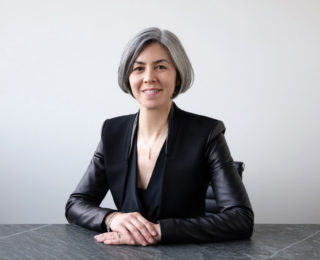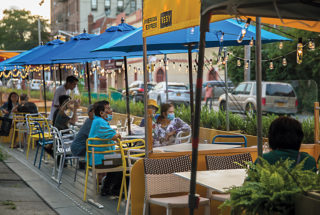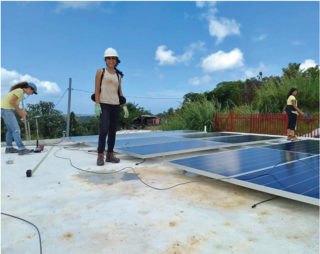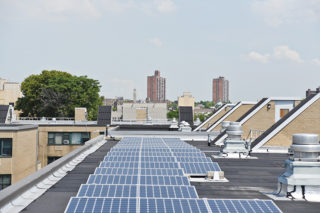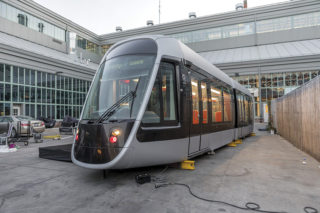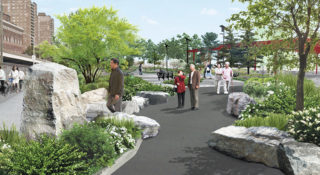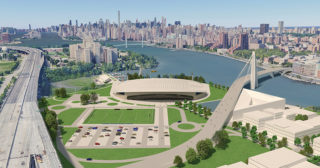COVID-19’s impact on all industries and aspects of day-to-day life has made clear just how connected our financial, social, and environmental worlds are. Epidemiologists warn that viruses like COVID-19 may appear more often in the coming decades, as deforestation and habitat destruction—our environmental footprint—force humans and animals to be in closer proximity to one another. Furthermore, our need to stay indoors and isolate to diminish the coronavirus’ spread has had monumentally damaging effects on world economies, with American unemployment alone becoming astronomically higher than it was during the Great Depression, seemingly overnight. The most striking effect of the shift in this fragile network, however, has been the continuing, enhanced hardship on at-risk communities and communities of color.
Before the outbreak of COVID-19, Perkins Eastman was studying the relationship between at-risk communities and climate change. Presented to New York City public agencies in 2018, our “Cool Streets” proposal highlighted the dangerous link between rising temperatures due to climate change and the urban heat island effect on vulnerable communities. Our aim was to build resiliency; we knew that tackling climate change and addressing the problem of socioeconomic disenfranchisement are one and the same. We designed a toolkit of options for cooling New York City’s public realm—a spectrum of initiatives that would reduce the urban heat island effect in high-risk communities through sustainable and achievable solutions that are accessible and free to all. Indeed, we quickly realized that some of the most effective interventions were also the cheapest. For example, by simply adding shade to an area, surface temperatures can be reduced by as much as 45°F on hot, sunny days.

Metropolises are ripe for cool communities, and many are finally responding to this need. As COVID-19 became a mounting concern, New York City initiated a version of Cool Streets as part of its “Cool It! NYC” rollout. The Department of Parks and Recreation identified streets with ample trees and canopy coverage already closed to traffic in accordance with the city’s “Open Streets” plan, with specific attention paid to streets located within highly vulnerable communities—classified as a 4 or 5 by New York City’s Heat Vulnerability Index. With the addition of spray caps on hydrants in these blocks, the city began to focus on a few of the cooling strategies identified in our 2018 report.
Prior to the outbreak of COVID-19, these steps were critical for creating cool spaces for all New Yorkers—now they are even more essential. With the first wave of the virus extending into the summer months, many communities lacked cooling resources like public pools or air-conditioned community centers. But even with those resources, enclosed spaces and populated areas with minimal physical distancing became a potential site for transmission. Cool Streets, as a sustainable place for communities to congregate and cool down, allowed New Yorkers to physical distance while gathering together.
While the implementation of Cool It! NYC has been a great start to sustainable cooling initiatives, it has been critiqued for not reaching out to all members of the community. This flaw adds potential harm for people in these areas. Without a sense of place pushing people to congregate, older residents and those who live alone are not as easily looked after, and therefore are at higher risk of heat-related injury and death. The persistent need for isolation due to COVID-19 has only fueled loneliness within these communities. Anxiety and depression are on the rise, and America’s loneliness epidemic, a mounting problem long before the initial virus outbreaks, has worsened during the COVID lockdowns. How then can NYC’s Cool Streets remedy the problem of community engagement and protect the health and safety of those who are most at risk?
Placemaking, a design intent that fosters community, has the potential to rectify both the potential risk of heat-death by lonely residents and the rising rates of mental illness due to COVID-19. Through placemaking, residents who congregate to cool down have a defined place where they can look after one another. It is another example of how the uplifting of communities involves climate justice, community engagement, and socioeconomic support.
Perkins Eastman continues to investigate how to leverage the unique properties of New York City to keep residents cool and bolster social connection, and to develop safe and sustainable spaces that address all the stressors that affect at-risk communities. When we design the built environment, we mean the environment at large—taking into account the multitude of confounding factors beyond what we can see and touch is vital in creating resilient communities.








